The Masterful Craft of Indigo Jahota Printing
November 19, 2020At Marigold Living, it’s our mission to uncover some of the most specialized heritage textile craft techniques the rich culture of India has to offer. We feel privileged to add the exquisite craftsmanship of Indigo Jahota printing to our repertoire and bring it to your home in the form of fine, authentic Indian textiles that make every day more beautiful.
We are delighted to introduce our brand-new Carnation-Delta Collection, featuring bedding, table linens, pillow covers and curtains made using the complex block printing and mud-resist indigo dyeing process known as Jahota printing. The multi-faceted story behind this technique is almost as compelling as the textiles themselves, contributing to their old-world Rajasthani charm. Read on to discover the fascinating heritage behind these distinctive textiles that look just as chic and dramatic today as they did when they adorned Royal patrons’ homes and wardrobes centuries ago…
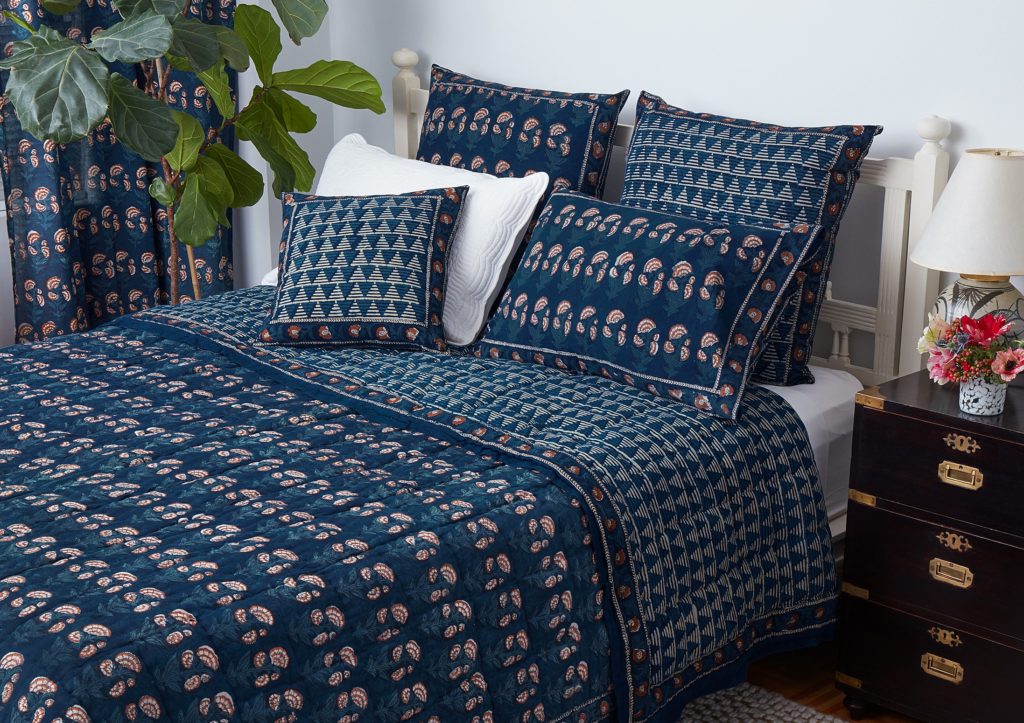 Carnation-Delta Bedding Collection
Carnation-Delta Bedding Collection
The Ancient Origins of the Jahota Technique
Originating from the Jahota village in Rajasthan, the Jahota printing technique gained popularity in the early 18th century under the patronage of Maharaja Jai Singh—the Hindu Rajput ruler and founder of the fabled Pink City of Jaipur—and his wife. “Bagru” and “dabu” print processes, which form the foundations of Jahota printing, go back much further, however.
The story of these captivating textiles is not only of their ancient heritage, but also of the artisans who make them. From hand carving the wooden blocks, to hand printing every motif through the various stages of its evolution as a multi-hued pattern, the artisans make each piece their own, imbuing them with subtle variations in color and pattern that lend depth and character.
The Signature Black and Red Bagru Hand Block Print
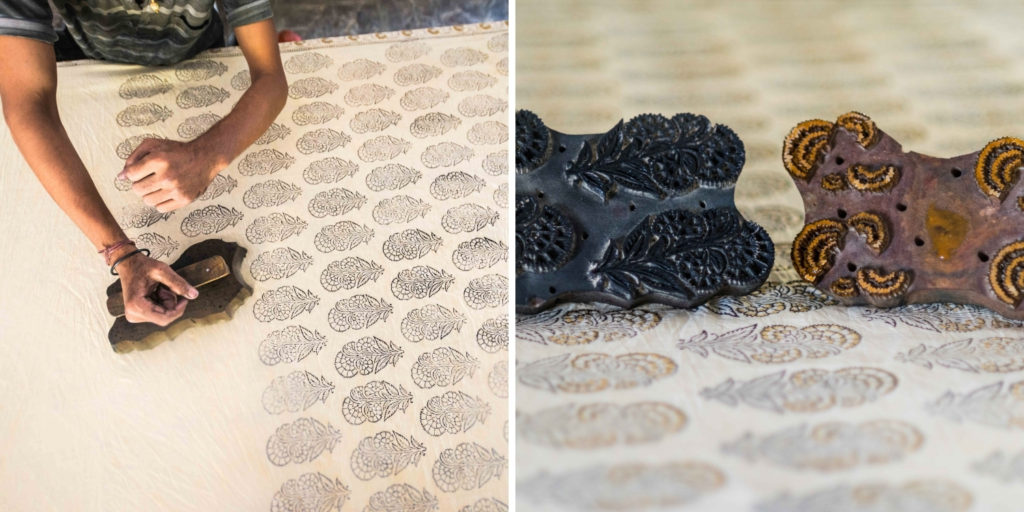
Introduced in the town of Bagru, a short distance from Jaipur, roughly 450 years ago, bagru printing requires fabric to first be soaked in “harda,” a substance made from fruit that binds the dye and creates a distinctive yellow color. After drying, the fabric is hand printed with carved wooden blocks in black and red colors.
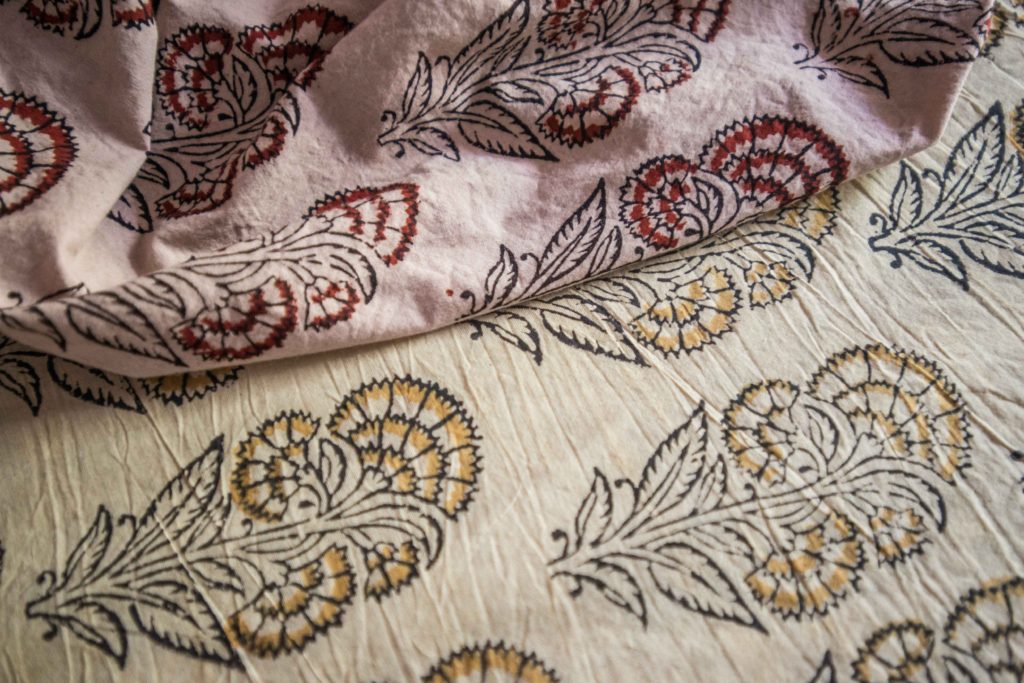 The dye initially appears brown, but after drying in the bright desert sun of northwest India, it develops into a vibrant red shade. This vibrancy is the result of using both commercial and natural vegetable dyes, which also minimizes environmental impact.
The dye initially appears brown, but after drying in the bright desert sun of northwest India, it develops into a vibrant red shade. This vibrancy is the result of using both commercial and natural vegetable dyes, which also minimizes environmental impact.
To learn more about the block printing process, read our blog post on the technique.
The Painstaking Art of Dabu Printing
Involving many craftspeople and stages, “Dabu” printing is a complicated process that produces exceptionally beautiful results.
Delta-Carnation Table Linens Collection
At Marigold Living, we embrace heritage Indian design as much as we honor the age-old techniques used to create them. The designs and motifs typical to the Dabu artform share many similarities to traditional Rajasthani designs. Birds, fruits, flowers, plants, geometric shapes and ethnic motifs slowly come to life on the fabric as it is repeatedly printed, dried, dyed and washed.
The technique of dabu-resist printing is thought to have originated in China. The printing technique itself dates back to 675 AD, and it traveled to Rajasthan around the 8th century where it took hold.
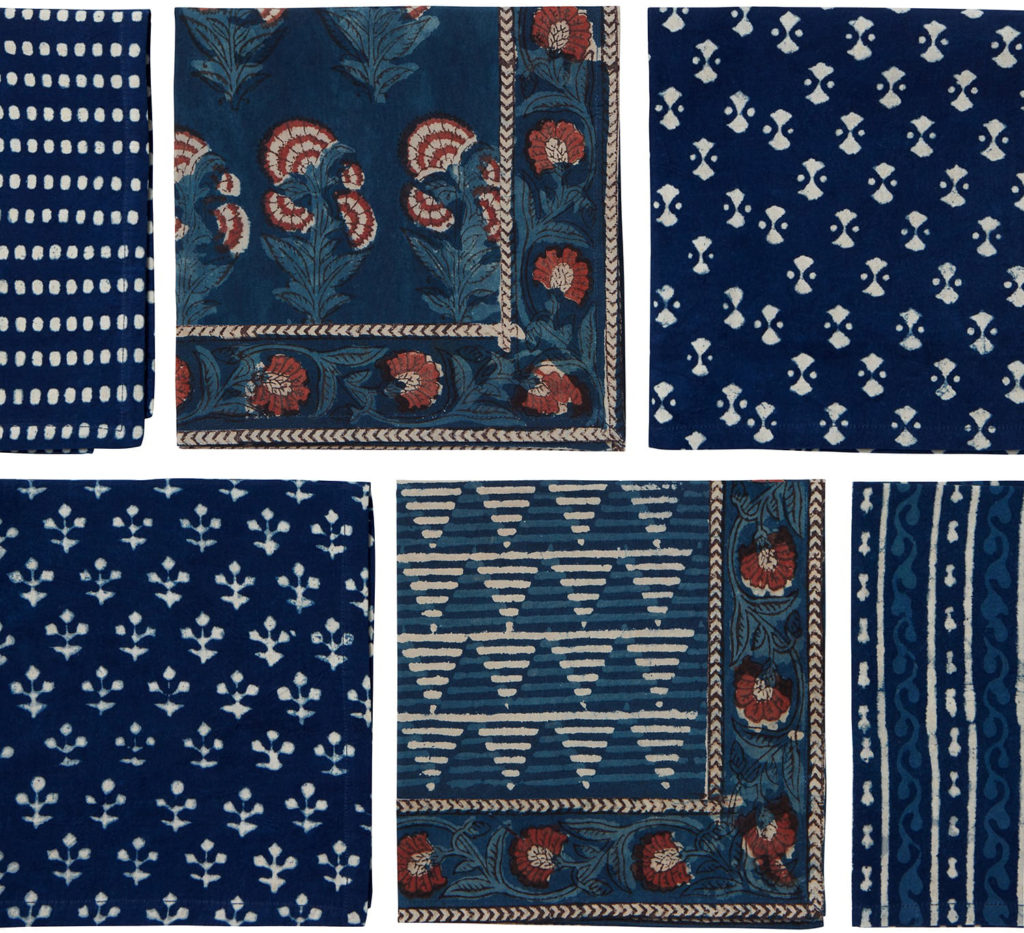 Mud-resist Indigo dyed napkins
Mud-resist Indigo dyed napkins
Dabu printing was traditionally done with all-natural dyes, with indigo being the most celebrated for its richness of color. Pioneers in the art of indigo dyeing, Indian craftspeople once mystified foreign travelers as fabrics dipped in indigo baths appeared seemingly unprinted, only for designs to magically appear after the colors developed during exposure in the open air and the mud-resist was removed. The indigo hue, lying somewhere between blue and violet, has long been associated with royalty. Used solely in high-society costuming, the color conveyed political power and the trappings of religious rituals.
The Dabu Process
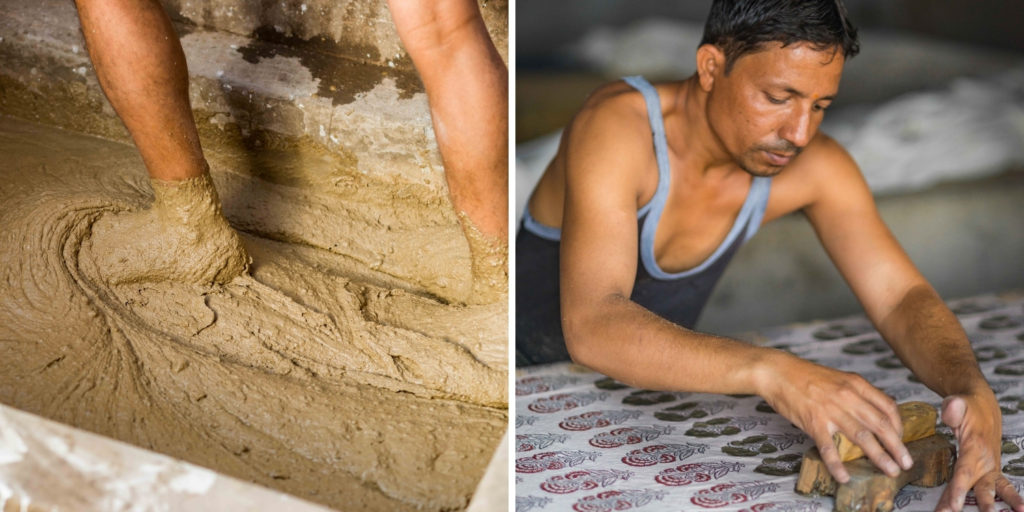
The dabu process requires fabric to be indigo dyed more than once to achieve a different hue for each part of the design. The patterns that are not blue in the final design—the red and black flowers against the off-white background in the Carnation design, and the off-white stripes in the Delta design—are first carefully block printed with a dye-resistant mud paste called “dabu.” A cold-water resist, dabu is particularly effective for blocking out areas during indigo dyeing.
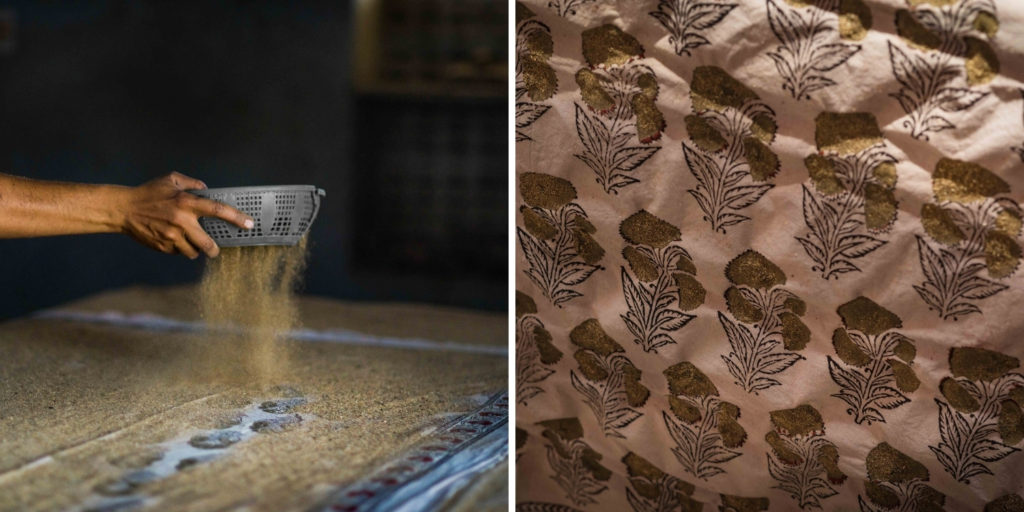 The fabric is then dusted with the fine desert sand of Rajasthan and dried in sunlight.
The fabric is then dusted with the fine desert sand of Rajasthan and dried in sunlight.
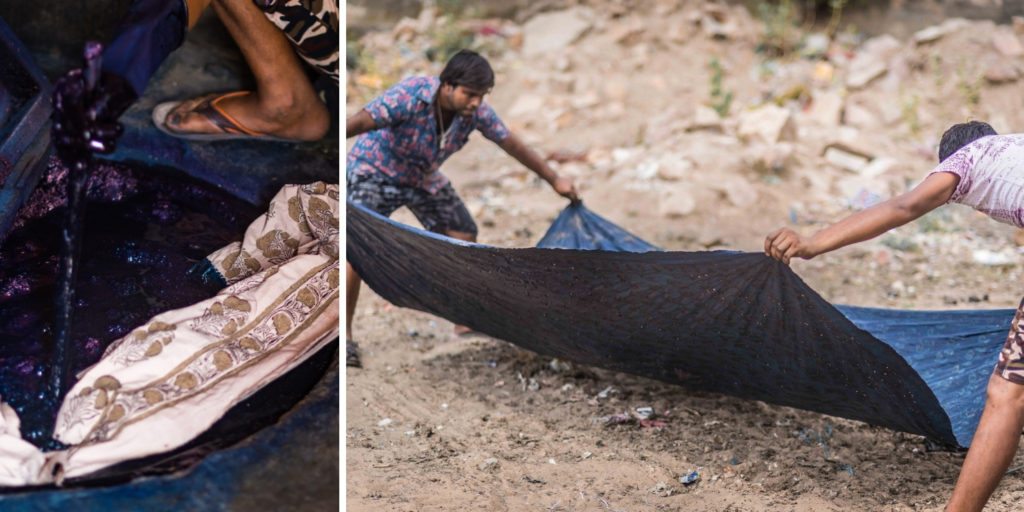
Next, the fabric is dipped gently into an indigo bath to achieve a light blue shade for all the background areas that are not covered with the dabu paste from step 1, and laid out to dry under the sun.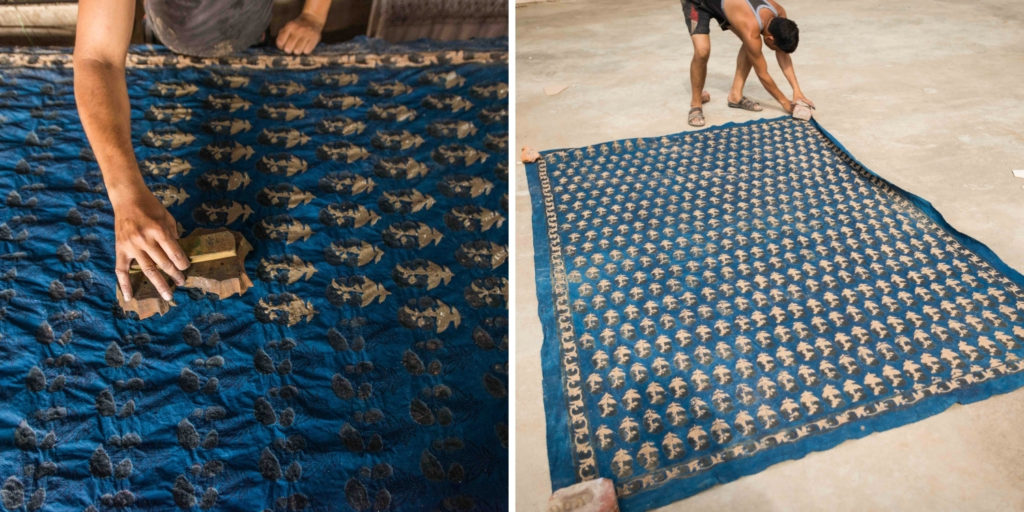 Once dried, specific parts of the design are again meticulously blocked in dabu paste and dusted with sand, resulting in the light blue patterns that appear in the final design—the leaves and stems in the Carnation design, and the light blue stripes in the Delta design. The fabric is then spread out in the sun where it completely dries out.
Once dried, specific parts of the design are again meticulously blocked in dabu paste and dusted with sand, resulting in the light blue patterns that appear in the final design—the leaves and stems in the Carnation design, and the light blue stripes in the Delta design. The fabric is then spread out in the sun where it completely dries out.
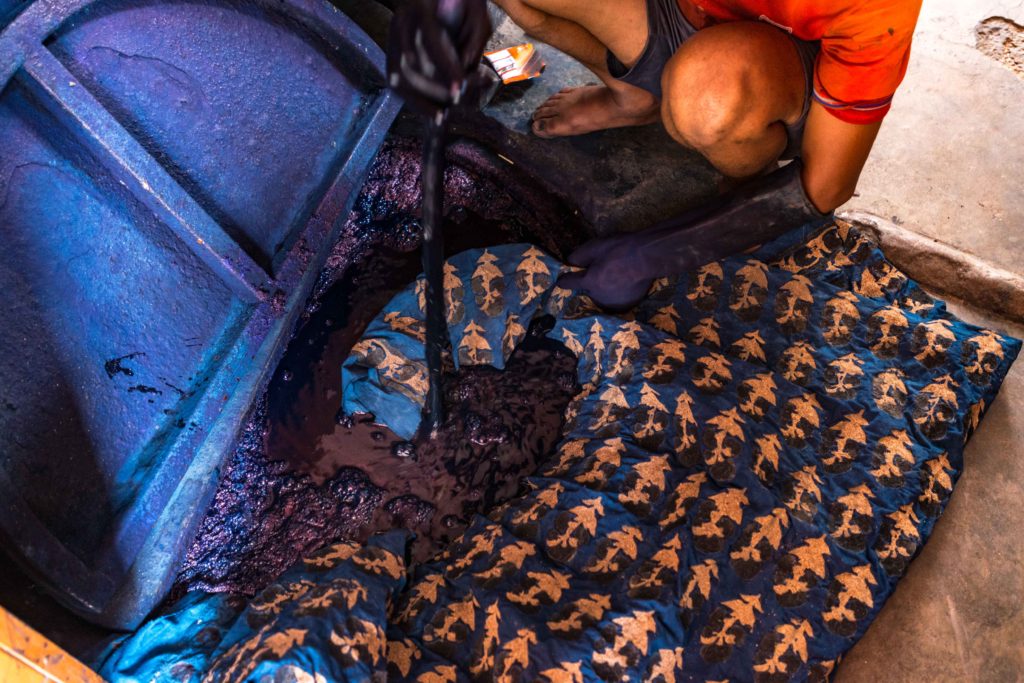
It is placed back in an indigo bath to achieve the deep blue background. Thus, the unprinted parts of the fabric catch the deep blue color, while the dabu-printed areas remain, as originally printed, in black and red against off-white from step 1, and against light blue from step 2 of dabu-resist printing.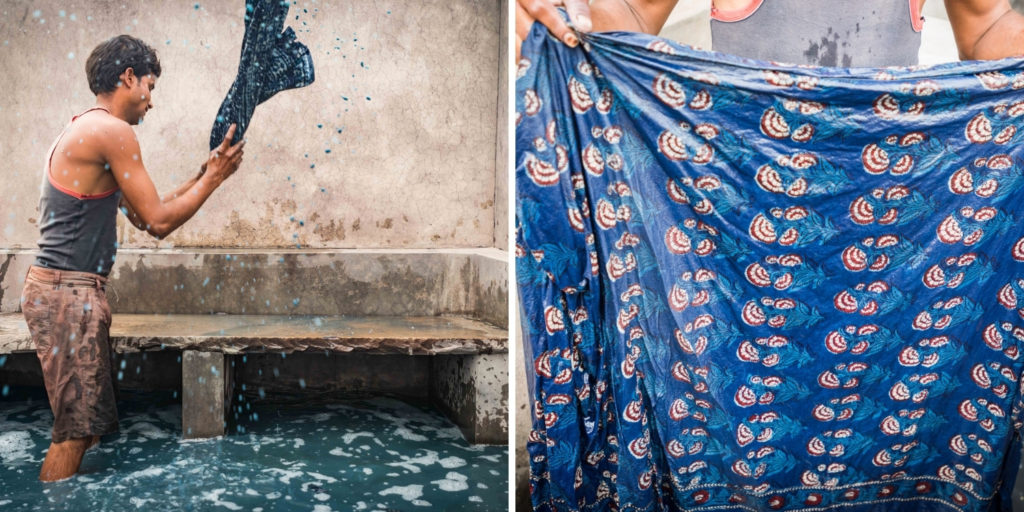 Once dried, the dabu is then washed off, and all the colored patterns are revealed!
Once dried, the dabu is then washed off, and all the colored patterns are revealed!
When Nature and Human Skill Come Together
Nature shapes Jahota printed fabrics as much as human hands do. If it weren’t for the wood the blocks are carved from, the plants that give the dyes their color, the sun and the wind that dry them and the sand that dusts them, these fabrics would never come to be the way they are.
The very seasons themselves dictate production. When the sun is high and hot, the courtyards in Bagru are blanketed with fabrics. But with almost every stage in the process requiring the cloth to be dried in sunlight, when the monsoon rain arrives, the craft is retired until the season has passed.
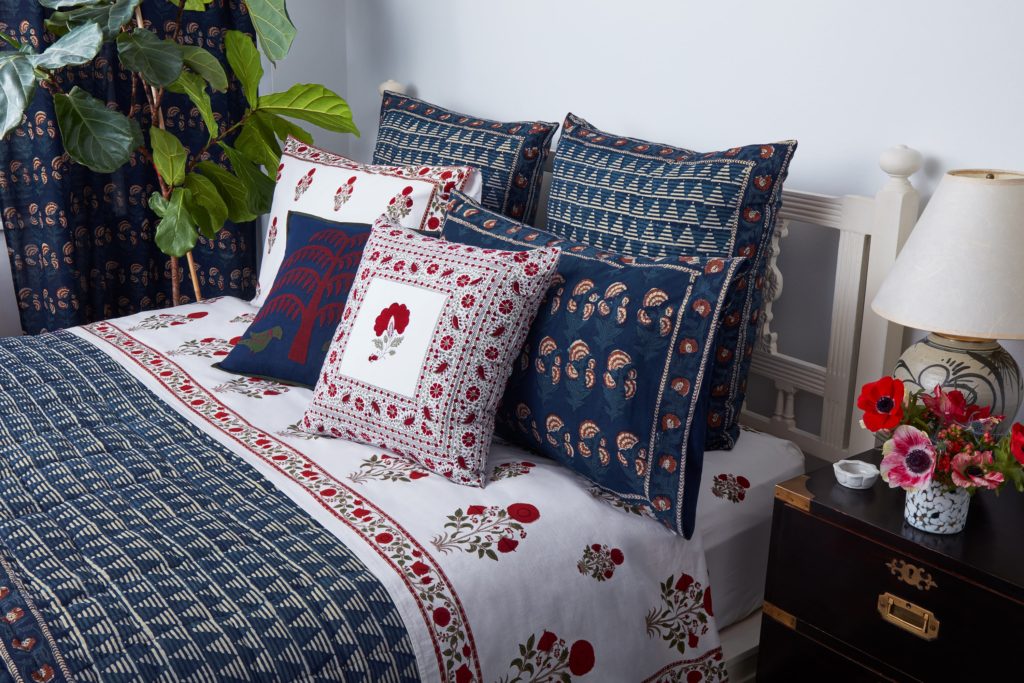 Carnation-Delta Bedding Collection with Janvi and Amaya block printed designs and Indian Fir Tree applique pillow cover
Carnation-Delta Bedding Collection with Janvi and Amaya block printed designs and Indian Fir Tree applique pillow cover
The effort required to produce these textiles is immense. It is considered one of the toughest techniques in block printing, and the finished pieces reflect the care and skill that go into making them.
Enjoying the Ancient and Modern Stories Behind Indigo Jahota Printed Textiles in Your Home
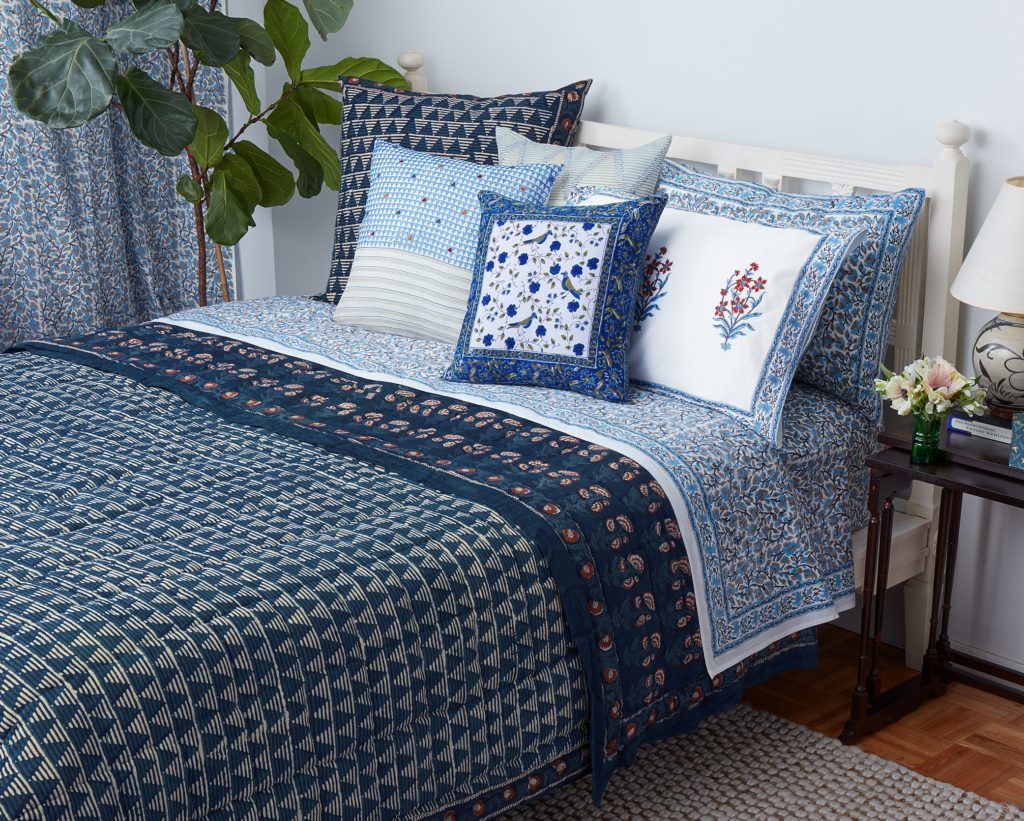 Delta-Carnation Bedding Collection with Anna blockprinted sheets and silk embroidered pillow covers
Delta-Carnation Bedding Collection with Anna blockprinted sheets and silk embroidered pillow covers
These dynamic, eye-catching designs are classics. They blend graciously with many fabrics from across our block printed and embroidered collections—and will beautifully complement your favorite pieces to add a touch of heritage to your home. By welcoming these textiles into your home, you can also enjoy the unique stories that they carry with them.

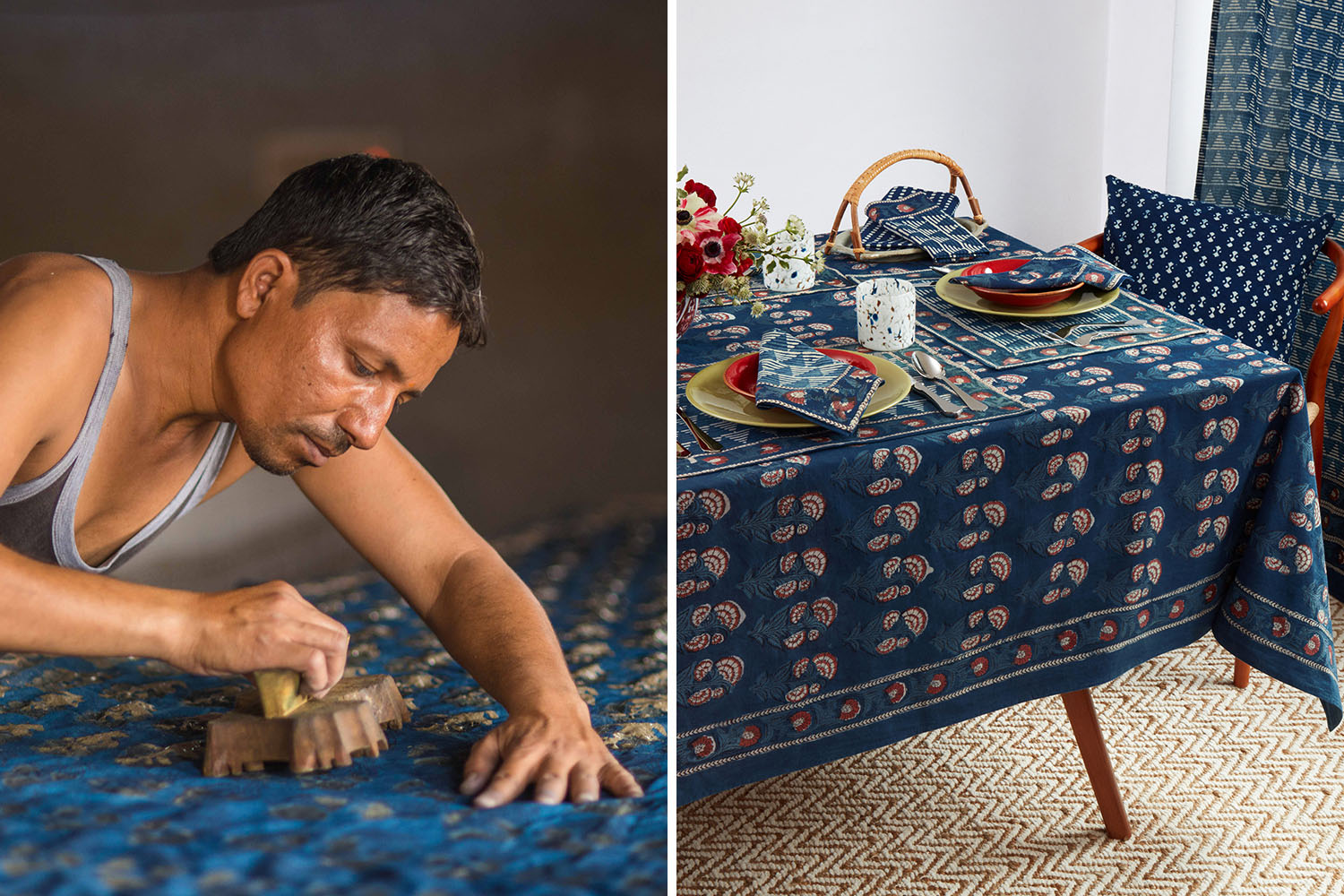
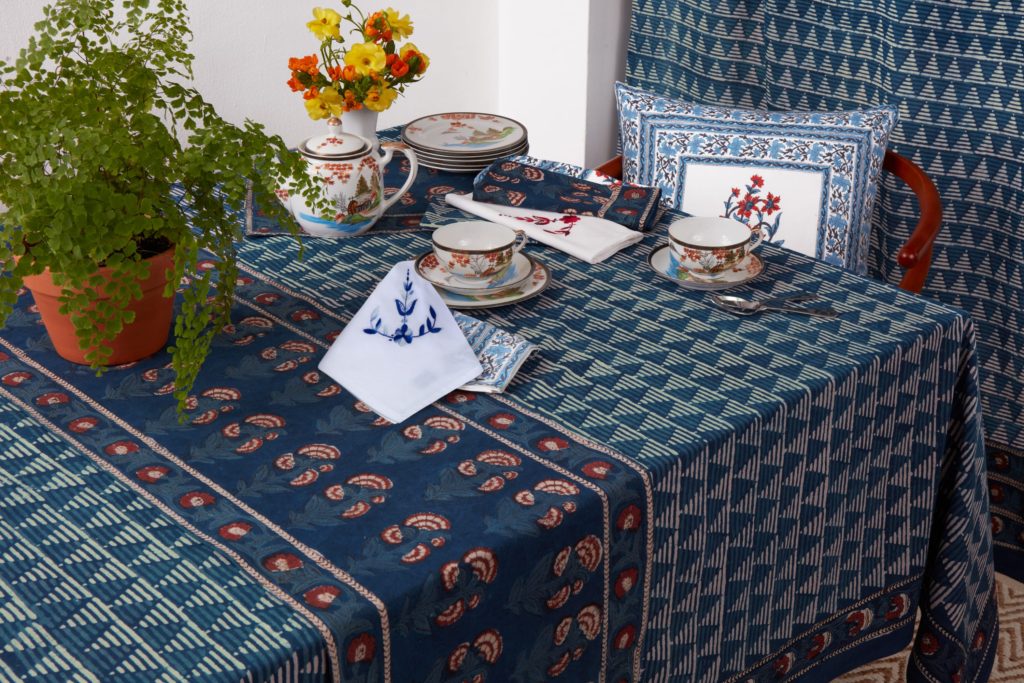

Leave a Comment